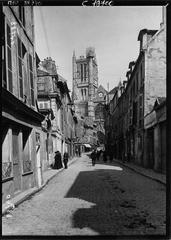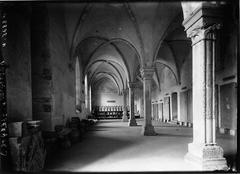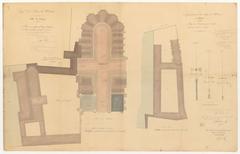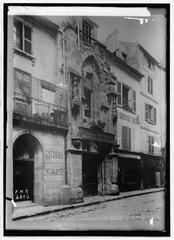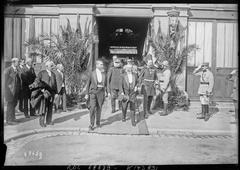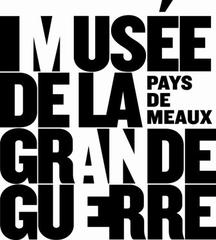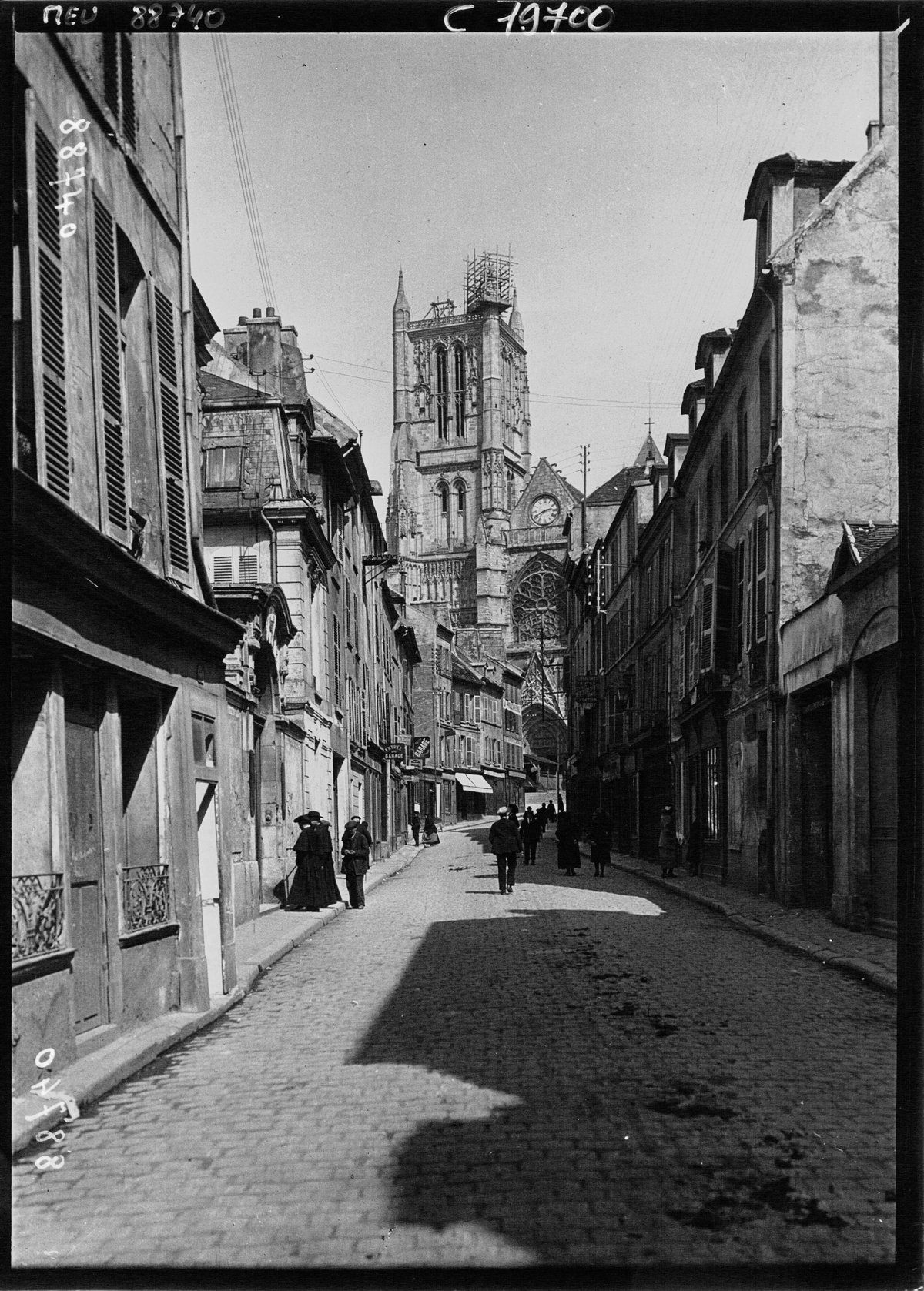
Meaux Cathedral Visiting Hours, Tickets, and Historical Sites Guide
Date: 14/06/2025
Introduction
Meaux Cathedral (Cathédrale Saint-Étienne de Meaux) is a remarkable monument of French Gothic architecture and a living symbol of centuries of religious, cultural, and artistic heritage. Located in the historic episcopal city of Meaux, France, the cathedral rises above the old town, captivating visitors with its majestic, though asymmetrical, bell tower, intricate stone carvings, and luminous interior. The cathedral’s origins in the late 12th century reflect both the architectural evolution from Romanesque to Gothic and the enduring faith and resilience of the local community.
This detailed guide provides essential information for visiting Meaux Cathedral: current visiting hours, admission policies, accessibility, guided tours, travel tips, and an exploration of the cathedral’s architectural marvels and historical significance. You’ll also find advice on nearby attractions, photographic highlights, and practical tips to make the most of your visit.
For the most up-to-date information, check the official diocesan website and the Meaux tourism portal before your trip. Discover the spiritual beauty and rich history of Meaux Cathedral, one of Île-de-France’s most treasured landmarks. (France-Voyage, Triplyzer, Ville de Meaux)
Contents
- Introduction
- Historical Overview
- Origins and Early Construction
- Architectural Evolution
- Cultural and Religious Significance
- Notable Historical Events
- Visitor Information
- Visiting Hours
- Tickets and Admission
- Accessibility
- Guided Tours and Audio Guides
- Travel Tips
- Nearby Attractions
- Photographic Highlights and Special Events
- Architectural and Artistic Highlights
- Preservation and Heritage Status
- Frequently Asked Questions (FAQ)
- Conclusion
- Sources and Further Reading
Historical Overview
Origins and Early Construction
Construction of Meaux Cathedral began in the late 12th century, around 1175–1180. The original Romanesque church was soon replaced due to structural issues, giving way to a new Gothic edifice. The city of Meaux itself preserves Gallo-Roman ramparts, underscoring its long-standing importance as a regional center.
Architectural Evolution
Romanesque to Gothic
Under the direction of architect Gautier de Varinfroy in the 13th century, the cathedral transitioned fully to the Gothic style. Pointed arches, flying buttresses, and ribbed vaults replaced the older Romanesque elements, aligning Meaux Cathedral with the architectural innovations of northern France.
Construction Phases
The building process spanned over three centuries, interrupted by financial difficulties, the Hundred Years’ War, and English occupation. The choir and transept were finished by 1235, the nave extended around 1460, and the bell tower completed in 1540. The structure’s “unfinished” appearance—most notably the incomplete right tower—bears witness to these historical interruptions.
Interior Features
The cathedral’s double ambulatory, five radiating chapels, five-aisled basilica plan, and soaring vaults (over 30 meters high) create a sense of grandeur and space. Light pours through tall clerestory windows, while the three- and four-level elevations in the nave and choir showcase classic Gothic design. (Mapping Gothic)
Cultural and Religious Significance
Meaux Cathedral has served as the seat of the Bishop of Meaux for centuries and is intricately linked to notable historical figures such as Jacques-Bénigne Bossuet, whose legacy is celebrated in the adjacent Bossuet Museum. The cathedral’s 17th-century organ and musical traditions further enrich its liturgical and cultural life.
Notable Historical Events
Meaux Cathedral has withstood wars, revolutions, and periods of decline. Its archives were largely lost during the French Revolution, but its resilience is evident in its continued use and the ongoing restoration efforts. Today, it hosts significant events such as the annual Meaux Historical Show and European Heritage Days.
Visitor Information
Visiting Hours
- Standard Hours: Daily from 9:00 AM to 6:00 PM.
- Summer Months (April–September): Extended hours until 7:00 PM.
- Note: Hours may vary on religious holidays and for special events—check the official website for updates.
Tickets and Admission
- Entry: Free of charge.
- Bossuet Museum: Ticketed, with standard prices around €5 for adults; reduced rates for children and seniors.
- Donations: Appreciated to support cathedral maintenance.
Accessibility
- Wheelchair accessible via ramps.
- Accessible restrooms available.
- Some side chapels and the crypt have limited access due to steps.
Guided Tours and Audio Guides
- Guided Tours: Available for groups and individuals (advance booking recommended during tourist season).
- Audio Guides: Offered in multiple languages.
- Pamphlets: French and English pamphlets can be found at the entrance.
Travel Tips
- Best Time to Visit: Weekday mornings or late afternoons for fewer crowds and optimal lighting.
- Transport: Walkable from Meaux train station (approx. 15 minutes), with regional buses and parking nearby.
- Dress Code: Modest attire required; cover shoulders and remove hats inside.
- Photography: Allowed (no flash or tripods).
Nearby Attractions
- Bossuet Museum: Housed in the former bishop’s palace, featuring art and manuscripts.
- Bossuet Gardens: Formal French gardens ideal for relaxation and picnics.
- Gallo-Roman Ramparts: Explore the ancient city walls.
- Meaux Old Town: Wander cobbled streets, historic façades, and local markets.
- Brasserie L’Esplanade Meaux: Dining with cathedral views.
- Marne River: Scenic walks nearby.
Photographic Highlights and Special Events
- Façade and Rose Windows: Capture the grandeur and intricate details.
- Bossuet Gardens: Best in late spring and early autumn.
- Special Events: Meaux Historical Show (summer), European Heritage Days (September), concerts and choral performances—see the tourism portal for schedules.
Architectural and Artistic Highlights
- Exterior: Five ornate portals, flamboyant Gothic left bell tower, flying buttresses.
- Interior: Five-aisled nave, double ambulatory, soaring vaults, stained glass windows (notably the 14th-century Crucifixion and 15th-century rose window).
- Chapels: Each with unique devotional and artistic features.
- Bossuet Statue: 1911 monument to the influential bishop.
- Music: 17th-century organ, regular concerts.
Preservation and Heritage Status
- Historic Monument: Protected since 1840 (France-Voyage).
- Ongoing Restoration: Supported by the diocese, local government, and heritage organizations.
- Community Role: Active site of worship, events, and civic gatherings.
Frequently Asked Questions (FAQ)
Q: What are the current visiting hours?
A: Typically 9:00 AM–6:00 PM daily; extended in summer. Confirm on the official website.
Q: Is there an entry fee?
A: No, admission is free. The Bossuet Museum is ticketed.
Q: Is the cathedral accessible for wheelchairs?
A: Yes, main areas are accessible; some chapels and crypt have limited access.
Q: Are guided tours available?
A: Yes, regularly offered. Audio guides and pamphlets available at the entrance.
Q: Can I take photos inside?
A: Yes; avoid flash and tripods.
Q: What other attractions are nearby?
A: Bossuet Museum, Bossuet Gardens, Gallo-Roman ramparts, Marne riverside walks, and Meaux’s old town.
Conclusion
Meaux Cathedral is a masterpiece of Gothic architecture and a vibrant center of community, faith, and culture. Its free admission, accessible facilities, and rich programming make it a welcoming destination for all. Whether you are an architecture enthusiast, a history buff, a pilgrim, or a casual visitor, Meaux Cathedral and its surroundings offer a memorable journey into the heart of France’s historic heritage. For the latest updates, visit the diocesan site, the Meaux tourism portal, and download the Audiala app for event notifications and travel tips.
